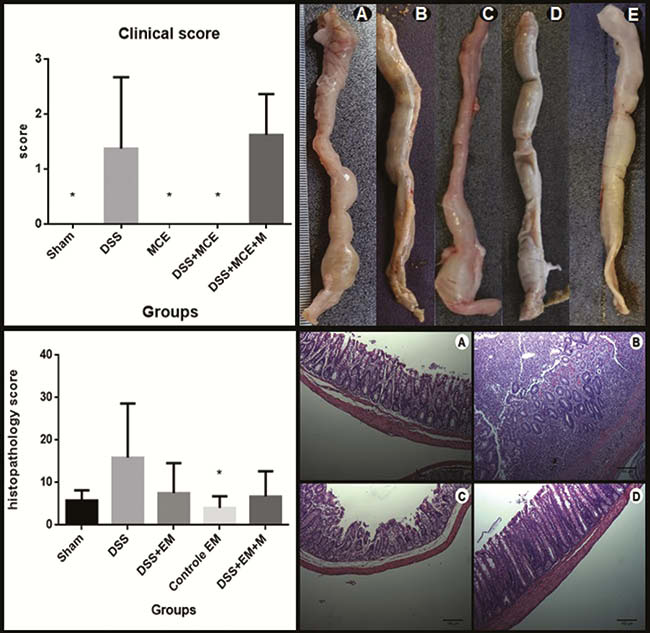P055 Effect of Mimosa caesalpiniifolia extract on DSS-induced colitis in Wistar rats
A. Garnevi Fávero1, T.S. Cordeiro1, K.N. Silva1, L. Cardili2, M.J.D. Silva3, A.P.R. Paiotti1
1Universidade Federal de São Paulo – Escola Paulista de Medicina UNIFESP/EPM, Discipline of Gastroenterology, Sao Paulo, Brazil, 2Universidade Federal de São Paulo – Escola Paulista de Medicina UNIFESP/EPM, Pathology, Sao Paulo, Brazil, 3Universidade Estadual Paulista, UNESP, São Vicente, Brazil, Biosciences Institute, Sao Paulo, Brazil
Background
Iinflammatory bowel disease (IBD) is a chronic disease characterised by dysregulation of the immune function response and imbalanced release of cytokines and unresolved inflammatory progress associated with the intestinal mucosa. In this way, new drugs are constantly tested as a novel treatment option.
Methods
Forty male Wistar rats were randomised into five groups: Sham; 5% DSS-induced colitis; control MC extract (125 mg/kg/day); 5% DSS-induced colitis treated with MC (125 mg/kg/day); 5% DSS-induced colitis treated with MC + 5-ASA (125 mg/kg/day for both). Colitis was induced by administration of 5% DSS (MP Biomedicals), diluted in drinking water and offered
Results
MC extract treatment reduced significantly the severity of DSS-induced colitis evidenced by a decreased in clinical symptoms (

Conclusion
MC extract reduces the clinical signs and suggests a potential anti-inflammatory effect on DSS-induced colitis.


